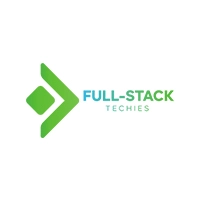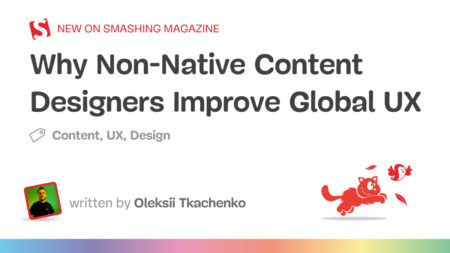The headlines are seductive: AI will replace developers. Coding is dead. Ship 10x faster with half the team. It’s the kind of hype that grabs attention and fuels confusion.
I understand the appeal. As a former chief product officer and now CEO, I’ve seen firsthand how AI can dramatically boost productivity. But let’s be clear: AI won’t eliminate developers. It will expose the gap between teams that use AI to scale with discipline and those that don’t. The future doesn’t belong to teams that write the most code. It belongs to those who deliver the most resilient, trustworthy, and scalable software. That future needs development teams. But it needs a different mindset and a different kind of leadership.
The Wrong Question
When execs ask, “How many developers can we cut if we embrace AI?”— They’re asking the wrong question.
The right question is: How do we evolve our entire software lifecycle to match the velocity AI makes possible without breaking trust or burning down quality?
AI may write the code, but development teams are still responsible for its behavior. As code generation gets faster and more abstracted, ensuring its quality, performance, and security at equivalent scale becomes more vital. That’s why teams need to be focused on delivering quality across the full SDLC, from design to production and every step in between.
Quality Is the New Velocity
In the AI era, speed is table stakes. What differentiates leaders is the ability to scale without sacrificing quality. Too many organizations still treat quality as a separate phase, or worse, a bottleneck. But quality isn’t a to-do on the checklist. It’s a mindset. It’s embedded in how you design APIs, review AI-generated code, manage dependencies, monitor performance, test everywhere and every way you need to, and ship continuously. AI lets you go fast. But coding velocity without quality velocity creates fragility. And fragile systems erode user trust, invite security risks, and rack up technical debt fast.
The companies that are winning with AI are the ones embedding quality into their development DNA so they can harness AI responsibly and sustainably.
Developers Are Becoming Curators
Let’s talk about what’s really changing. AI is shifting the developer’s role from creator to curator. Instead of writing every line from scratch, developers are now evaluating, orchestrating, and refining AI-generated code. What matters now is not how fast you write code but how well it delivers value through security, quality, and trust. The value is shifting from raw output to intelligent oversight.
This means development teams need new skills in addition to what’s made them great. Knowing when to trust the model and when to intervene. Knowing how to test, not just what was written, but what was assumed. Knowing how to preserve intent as AI scales the surface area of your software.
Cross-Functional Accountability Is Non-Negotiable
AI doesn’t just impact developers. It reshapes the entire cost structure and expectation framework across product, engineering, and even go-to-market teams.
The mistake I see too often is assuming that AI productivity gains in code generation don’t require changes elsewhere. That’s a recipe for misalignment. If coding moves faster, but quality and security processes happen after release, you’re not more agile, you’ve just created a significant bottleneck and more business exposure.
Scaling with AI demands cross-functional accountability. Teams must define shared quality goals, not just hit velocity metrics. Leaders must align on what “done” means in a world where AI can write code, APIs are dynamic, and users expect continuous improvement.
According to a recent market trend survey conducted by SmartBear, when asked what the biggest barrier their organization faces when it comes to making software quality a shared priority across teams, 67% of leaders agreed it was viewing quality as only a tester’s responsibility. If that continues, we are going to witness some serious application and business failures.
Beware the Growing Gap
There’s a widening disconnect between how executive teams talk about AI and what engineering teams actually need to deliver it safely.
In that same SmartBear survey, 55% of Directors and VPs now say they’re fully prepared to adopt disruptive technologies, a 14-point increase year-over-year, while only 50% of developers and testers feel the same, a 14-point drop. That 28 point separation in sentiment tells us that practitioners can perhaps see implementation risks that are not apparent to executives, and hint at the fact the cultural change management is needed for successful adoption of AI-powered tools. If people feel their job, identity, or prospects are threatened, then reticence is natural.
Many leaders see the hype and assume they can reduce headcount, ship faster, and cut costs all at once. But building secure, scalable, maintainable software with AI requires a structured approach and patience. Engineering teams need the space to build that structure: to define standards, and test frameworks, validation layers, and observability pipelines. They need tools that don’t just accelerate development but support sustainable scaling. Otherwise, companies risk chasing speed without structure. That’s when trust breaks down.
AI Is a Responsibility
Our job is to help our customers thrive wherever they are on their AI journey. That means building tools that support optionality and control. If you’re not ready to use AI in production, we meet you there. If you’re experimenting with agentic workflows or LLM-based testing, we’re there, too. But we never forget that quality is our responsibility, not a feature toggle.
Companies should keep building at the bleeding edge but with guardrails. With clarity. With a product-led mindset that puts trust and impact above novelty.
Let’s Build Systems that Deserve to Scale
AI won’t replace development teams, but it will expose those who haven’t evolved. This moment is bigger than automation. It’s about rethinking how we define success in software. It’s about recognizing that speed and scale mean nothing without trust. It’s about embracing quality not as a phase, but as a culture.
Let’s stop asking if AI will take our jobs. And start asking if we’re building systems that deserve to scale.
The post AI Won’t Replace Developers, But It Will Leave Some Behind appeared first on SD Times.
Source: Read MoreÂ



